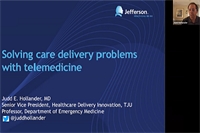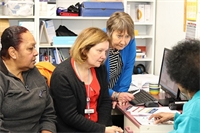08Jul
Celebrating 20 years of the Acute Demand Management Service
The Acute Demand Management Service, has been helping to care for people in the community for 20 years. The Urgent Care Service Level Alliance works closely with this service and is proud of the progress that has been made. The following article was published in the Canterbury DHB CEO Update.
Home is where most of us feel comfortable – near our loved ones, our favourite chair, our comfy bed, or companionable pet. And when we are sick those sources of comfort can feel even more important. Yet when we are worried that we may be seriously unwell we can feel ready to sacrifice our happy place to know that we will be looked after and monitored by health professionals in a hospital setting. The Acute Demand Management Service (ADMS) is an approach to care that allows people to stay home and still receive that monitoring and it has huge benefits for our consumers and health system. And it began 20 years ago this month.
The benefits also extend much further than the thousands of people who get to stay home each year. The original implementation in 2000 known as Community Care set the platform for the integrated health system we have today.
In 1999 Canterbury had the highest number of acute admissions growing at the fastest rate (approximately 6 percent every year). General Practice was the biggest referrer to the Emergency Department (ED) accounting for more than 30 percent of all referrals and half of all people who attended ED were admitted to hospital.
Read the CEO Update for the full article.
About the Author
Related

International urgent care colleagues shared their experiences and reflections on implementing a tele...
Read More >

In an attempt to keep people well in their homes this winter, some Canterbury general practices have...
Read More >

The Urgent Care Service Level Alliance is made up of a motivated, dynamic and skilled group of peopl...
Read More >

Latest key messages from the Urgent Care SLA
Read More >

More than a third of Cantabrians have had their flu immunisation already this winter and there’s st...
Read More >